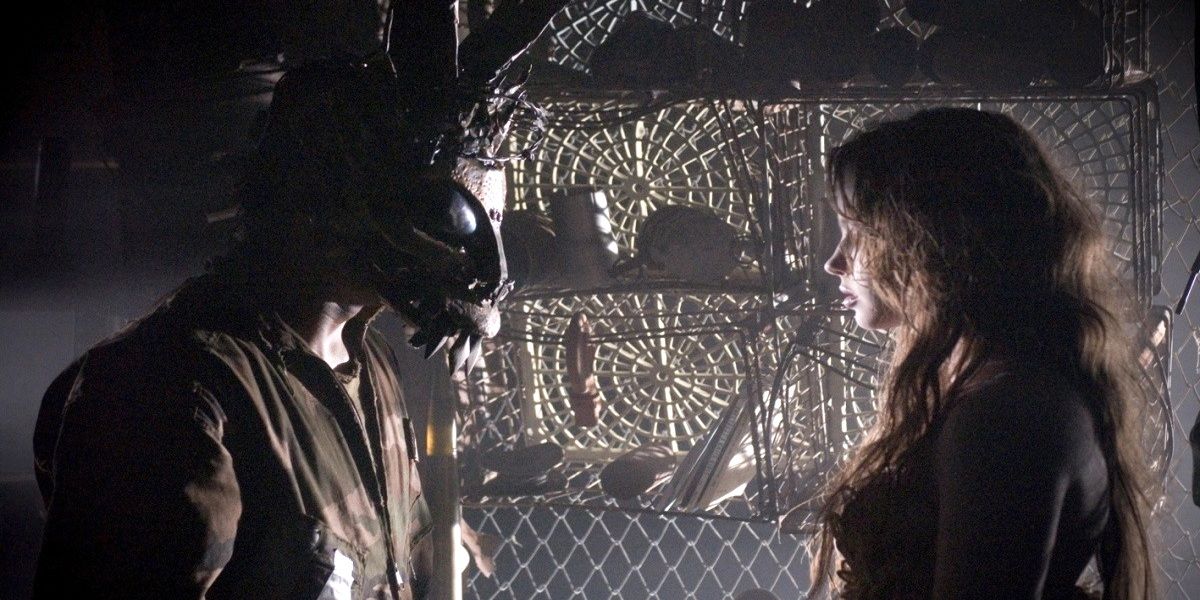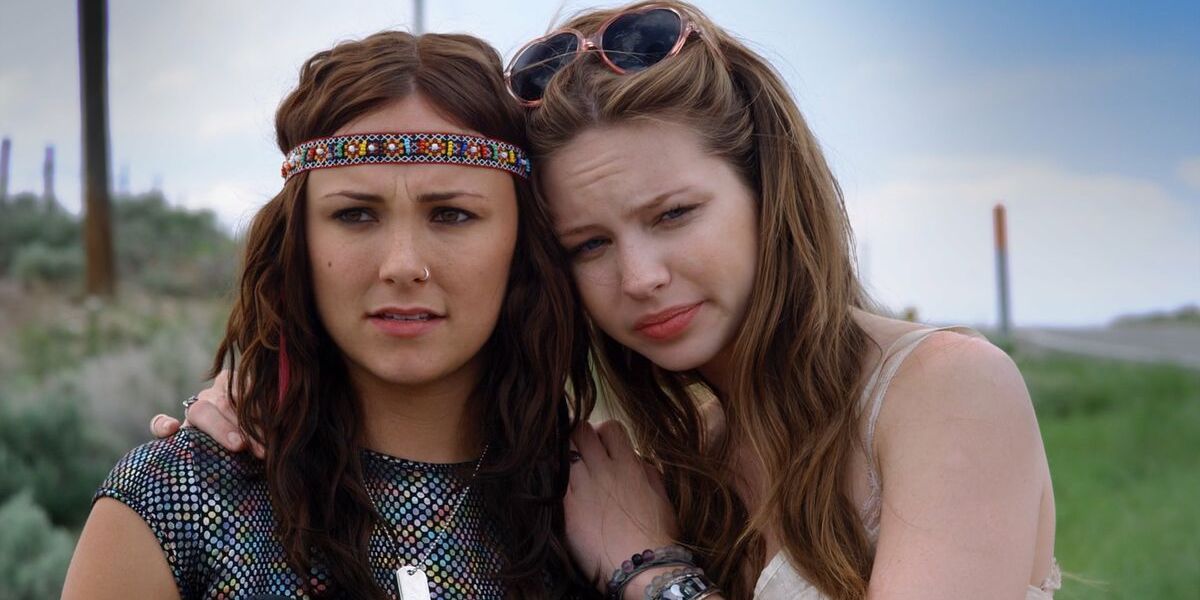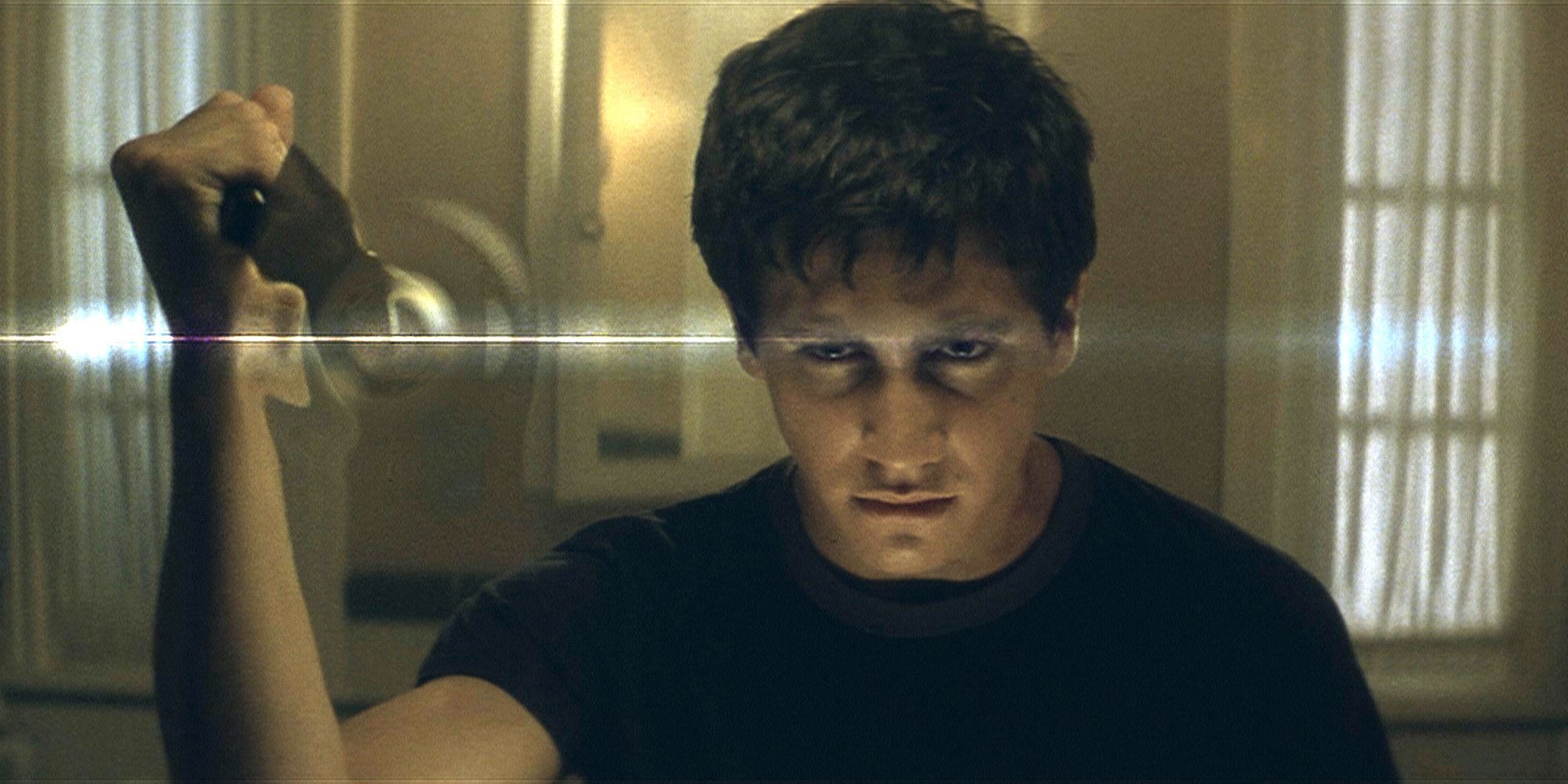[ad_1]
“Wake up.” On midnight of October 2, 1998, Donnie Darko (Jake Gyllenhaal) was awakened by a voice. Following the directions of the voice, he sleepwalks to where it’s emanating from. On a golf course in the middle of the night, he meets a giant, menacing-looking rabbit telling him that the world will end in 28 days, 6 hours, 42 minutes, and 12 seconds. The 2001 film Donnie Darko has become a cult classic with its intriguing yet perplexing storyline that includes time travel and a mysterious and even terrifying rabbit named Frank (James Duval). On June 29, 1995, a man is sitting on a windmill when he is met by an apparition in the form of a girl in a dress, appearing deceased, warning him that in 4 days, 17 hours, 26 minutes, and 31 seconds the world would end. In 2009, the follow-up to Donnie Darko – S. Darko – was released. And while the world didn’t end on what would have been July 4th, 1995, after watching S. Darko, one could understandably wish it would have.
At a 13% rating from Rotten Tomatoes–which still feels generous– S. Darko has been remembered, or often not remembered, as the dismal sequel to one of the most beguiling movies ever made. Only two people involved in Donnie Darko were brought back for the sequel: Daveigh Chase who reprised her role as Samantha Darko and Adam Fields who was a producer for both films.
Why Is ‘Donnie Darko’ One of a Kind?
Donnie Darko isn’t an easy film to follow, often requiring multiple viewings to truly understand the layers and mechanisms of its universe. There was even a now-non-functioning website dedicated to explaining more elements of the film as well as details prior to and after the film’s events. But despite the esoteric nature of Donnie Darko, it has become a beloved film in the same mystifying echelon as movies like 2001: A Space Odyssey and Momento. The same can’t be said for S. Darko, which, unlike Donnie Darko, hasn’t gained the same cult following. Donnie Darko screenwriter and director Richard Kelly has been adamant about his not being involved in any way with S. Darko: “I hate it when people ask me about that sequel because…I had nothing to do with it. And I hate it when people try and blame me or hold me responsible for it because I had no [involvement]. I don’t control the underlying rights to [the Donnie Darko franchise]. I had to relinquish them when I was 24 years old. I hate when people ask me about that because I’ve never seen it and I never will, so… don’t ask me about the sequel”
What’s Wrong With ‘S. Darko’?
It’s difficult to pinpoint what’s wrong with S. Darko because there are so many issues with this sequel. The storyline is muddled and can be difficult to follow, which considering the first film isn’t easy to follow, is telling. Sam, now 18, is traveling from Virginia to California–this is a continuity error because according to the defunct Donnie Darko website, the Darkos move to California after Donnie’s death– with her friend Corey (Briana Evigan) with the aim of creating new lives for themselves out west. But in Utah, their car breaks down which leaves them stranded in the pass-by town of Conejo Springs (“conejo” is Spanish for rabbit). While ostensibly waiting for their car to be repaired, Sam and Corey become swept up in the local issues of Conejo Springs including two missing boys and the PTSD-afflicted veteran, “Iraq Jack” (James Lafferty) as everyone calls him, whose odd behavior leads the townspeople to believe he committed the abductions and likely murders.
Sam, like Donnie, has been experiencing sleepwalking, which results in her waking up to find herself in various parts of town, just as her brother had seven years earlier. In S. Darko, Iraq Jack, whose real name is Justin Sparrow, which posits a relation to Roberta Sparrow (Patience Cleveland), the former nun-turned-science teacher that wrote the book “The Philosophy of Time Travel”, which is about how, according to Sparrow, time travel can be achieved, which serves as a guide for Donnie, fills the same role as Donnie: the troubled enigma of a person who’s privy to a force others are unattuned to. Iraq Jack, like Donnie, has been warned that the world will soon end. Sam fills the role of Frank. The dead girl in the dress that appears to Iraq Jack and gives him prophetic warnings is a deceased Sam. She, like Frank, is acting as a “Manipulated Dead.”
How Does “The Philosophy of Time Travel” Work in ‘S. Darko’?
The same time travel principles of “The Philosophy of Time Travel” that gave laws to Donnie Darko’s universe apply to S. Darko as well. In both films, the universe is at risk of collapsing. This risk arises when a “Tangent Universe” is created which threatens the existence of the “Primary Universe,” where reality takes place. If an “artifact” is not returned to the Primary Universe, a black hole will be created, ending all life. In S. Darko, Iraq Jack functions as the ‘Living Receiver”–a chosen one whose mission to is to guide the artifact, whatever it may be–in Donnie Darko it was a jet engine–to a portal to correct the bifurcation and keep the primary universe intact. As mentioned, Sam plays the same role as Frank did: she’s the Manipulated Dead. The Manipulated Dead serve as guides who contact the Living Receiver through a fourth dimension that only the Living Receiver can see. They warn the Living Receiver about the upending doom and give direction as to what steps to take to save the universe. Along the way, there are “Manipulated Living,” which also serve as guides to the Living Receiver; but unlike the Manipulated Dead, the Manipulated Living may be unaware of their role in guiding the Living Receiver and also may not be privy to the peril that would unfold if the Living Receiver fails their mission.
As time travel is a theme in both movies, Sam dies in S. Darko, twice. First, she is hit by a car that comes from nowhere. Then she is pushed down and falls on a metal rabbit mask, similar to Frank’s, which kills her. But she is brought back both times through time travel by Corey and later by Iraq Jack who has to die in order to restore balance to the universe. Like in Donnie Darko, after Iraq Jack perishes, and the universe is sent back in time to when the Tangent universe was created. But now the Primary universe has been saved.
Why Did ‘S. Darko’ Fail as a Sequel?
Watching S. Darko is like watching Donnie Darko in a funhouse mirror, minus the fun. It wants so badly to capture the awe of the first film that it tries to replicate it but instead appears as some distorted image–unsatisfying and a little off-putting. As with using the same elements in the first film, S. Darko tries to recreate similar characters in Donnie Darko but changes the details. Again, Iraq Jack is supposed to be the Donnie of S. Darko. Instead of baleful self-help guru Jim Cunningham (Patrick Swayze), who has many fooled but has his own evil secrets, there’s Matthew Davis as Pastor John Wayne (this film is unoriginal in more than one way, clearly), who instead of pushing self-help, pushes Jesus, and, like Jim Cunningham, isn’t the good soul he tries to appear as. Both men push their beliefs on their communities; Cunningham uses his “Attitudinal Beliefs” and Pastor Wayne has his “Jesusonomy.” Both men have women who are ardent followers. Cunningham is championed by Kitty Farmer (Beth Grant), the gym teacher that Donnie tells to shove Cunningham’s teachings up her ass, or, as Kitty said, “forcibly insert the Lifeline exercise card into my anus,” and Pastor Wayne’s most loyal adherent is Trudy (Elizabeth Berkley) who has the golden line “Conejo Springs used to be a decent place. But then came the drugs and anus sex.” This is an actual line in S. Darko and somehow not the worst part of the movie.
S. Darko tries and fails to recreate the theater scene in Donnie Darko, one of Donnie Darko’s most impactful moments. By comparison, S. Darko’s attempts to have its own theater scene that’s meant to resonate but instead feels cheap. And on the topic of cheap, both films had humble budgets of $4-$4.5 million. While Donnie Darko wasn’t a box office success, it at least managed to earn more than what was put into making it. S. Darko, however, brought in roughly a quarter of its $4 million budget. And while the films both had funding limitations, the cinematography makes all the difference between the film. In spite of not having much wiggle room for a budget, Donnie Darko is still well-made and well-shot. It even managed to cast big names such as Patrick Swayze and Drew Barrymore–Gyllenhaal wasn’t considered a big star during Donnie Darko’s release. S. Darko doesn’t have the same production value as its former. It’s a film with a modest budget that looks like it was made with a shoestring budget. Many of the scenes feel cheap or bland or just stupid.
The reviews for S. Darko were brutal. Of S. Darko, The AV Club had this to say: “This is Darko in name only, so those struck by Donnie Darko’s originality and twists won’t get a similar rush: They’re more likely to laugh and/or cry for all the wrong reasons.” When The Washington Post began its review of S. Darko with “Complete Dorko,” it was most likely not a winner. But time can change perspective. Donnie Darko was poorly received by the New York Times when it was released. The author of the review, for some reason, posited that Donnie Darko was trying to be a mystical version of a John Hughes film, to which most who watched the film would say “huh?” It went on to say that Donnie Darko wasn’t sure if it was trying to be a comedy or a tragedy. But what was misunderstood was that Donnie Darko is, in itself, its own genre of film, not deigning to resign itself to a box. It’s a distinct viewing experience that makes it difficult to categorize–and it’s certainly not trying to imitate John Hughes. Time has had a crystallizing effect on Donnie Darko which is why it’s so appreciated nowadays. But the same can’t be said for S. Darko, which since its 2009 release, hasn’t rendered any thoughtful reevaluations insisting on overlooked merits of the films. They’re simply not there.
At the end of Donnie Darko, Donnie has to sacrifice himself in order to keep the Tangent universe from collapsing and ending all life. After Donnie’s sacrifice, we’re taken back to the beginning of the film. All the events we have seen since Donnie avoided death on October 2, 1988, to October 31, 1988, have no longer happened. It’s back to start, save our troubled hero. But even though Donnie’s death prevented the events that would have transpired, there are scenes of people who were affected by Donnie waking up at night around the time he was killed, sensing something has happened, touched by Donnie’s sacrifice even though they’ll never truly understand what he saved them from. It’s the film’s way of showing that everything will be different now. Maybe even we’ll be different now. S. Darko’s ending is another failed attempt to mirror Donnie Darko. But instead of seeing characters who seem genuinely affected by a force beyond their understanding, it looks as if things will be the same as usual for the citizens of Conejo Springs, Utah. Donnie Darko isn’t just a movie; it’s an experience. But trying to recreate an experience leaves you longing for the irreplicable original.
[ad_2]
Source link
Armessa Movie News



